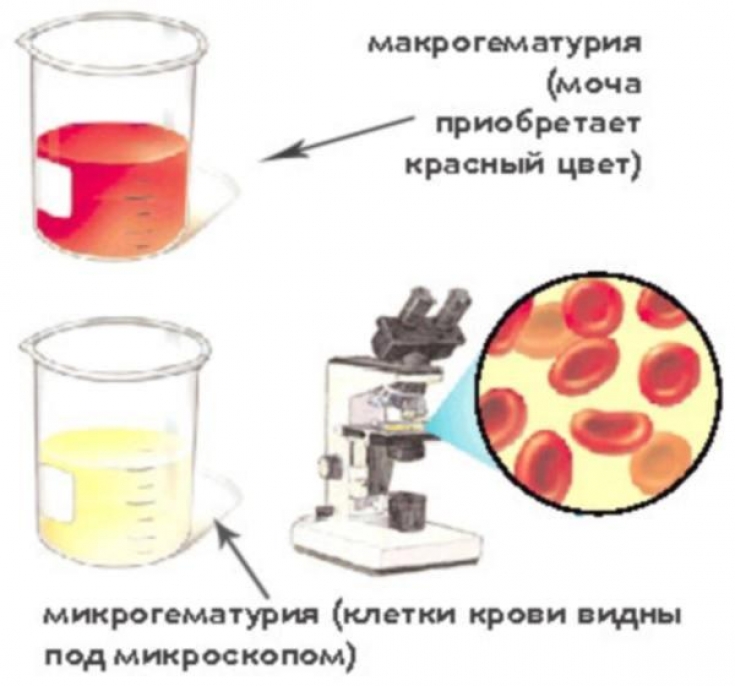The study of the physicochemical properties of urine is one of the most important methods of laboratory diagnostics not only of urological and nephrological, but also of many infectious, rheumatological and endocrinological diseases.
A doctor of any specialty should know and be able to correctly interpret the indicators of a general urinalysis. In this article on estet-portal.com, read about what urinary syndrome is, as well as why it occurs and how to correctly interpret changes in urinalysis.
Urinary Syndrome: Interpretation of Physical Characteristics of Urine
Urinary syndrome refers to changes in the physical properties, as well as chemical and microscopic parameters of urine.
Physical properties of urine – it is its relative density, quantity, reaction and color.
The relative density of urine in normal conditions can vary from 1.005 to 1.030 (average 1.020-1.026).
The relative density of urine depends on the amount of osmotically active substances in it, which is largely determined by the concentration ability of the kidneys.
In a healthy person, the amount of daily urine averages 1200-1500 ml. In this case, daytime diuresis should prevail over nighttime.
You may be interested in: Urinary incontinence in women: why it occurs
In turn, oliguria can develop both as a result of the influence of physiological (profuse sweating in hot weather, due to intense physical exertion), and pathological factors.
There are many reasons for the development of pathological oliguria. Among them, it is necessary to highlight the obturation of the urinary tract against the background of urolithiasis or due to compression by the tumor, as well as a decrease in renal perfusion against the background of general hypovolemia.
The normal urine reaction is 5.8-6.2. Increased acidity of urine may indicate alkalosis.

Urinary syndrome: change in color and chemical parameters of urine
Normal urine color is straw yellow. Among the reasons that can lead to a change in the color of urine, one can conditionally distinguish between physiological (for example, the use of products containing pigments) and pathological (hematuria, the presence of bile pigments).
Change in the color of urine is observed with glomerulonephritis, neoplasms of the kidneys. This phenomenon can also be a manifestation of jaundice.
Chemical examination of urine consists in determining the content of protein, glucose, ketone bodies, bilirubin, urobilin in it. Normally, the level of urobilin in the urine should not exceed 17 µmol/l. Other indicators should not be defined in it at all.
The appearance of protein in the urine indicates damage to the glomeruli of the kidneys, as a result of which their membranes become permeable to them. This can be observed in diabetes mellitus, amyloidosis and glomerulonephritis. It is important to emphasize that with urinary syndrome, daily proteinuria does not exceed 3.5 g per day.
The appearance of glucose may be due to hyperglycemia or renal glucosuria.
Bilirubinuria can be observed in diseases that are accompanied by the development of mechanical and parenchymal jaundice. An increase in the level of urobilin occurs against the background of hemolytic jaundice.
Follow us on Telegram
Urinary syndrome: as evidenced by the appearance of erythrocyturia
To characterize the urinary syndrome, terms are used that reflect certain pathological changes in the general analysis of urine.
Erythrocyturia – is the presence of an abnormal number of red blood cells in the urine. Normally, no more than 1-2 erythrocytes are determined in the field of view. Highlight:
1. Microerythrocyturia: up to 5-6 erythrocytes per field of view;
2. Erythrocyturia of moderate severity – 20-200 thousand/ml (in the analysis according to Nechiporenko);
3. Macrohematuria – erythrocytes cover the entire field of view.
Microerythrocyturia and moderate erythrocyturia are characteristic of chronic kidney diseases, and may also be the first manifestations of oncological diseases. At the same time, gross hematuria may accompany renal colic, glomerulonephritis, or be a manifestation of a neoplasm.
Cylindruria is characterized by the appearance in the urine of conglomerates consisting of protein, erythrocytes, leukocytes and other components. Formed in the tubular structures of the nephron, these conglomerates acquire a characteristic cylindrical shape, from which they got their name. In most cases, the appearance of a cylinder in the urine indicates a pathology of the tubular apparatus of the kidneys.
Read also: What symptoms indicate prostate adenoma
Urinary syndrome – not a disease, but a symptom complex of changes in urinalysis

Normally, urine is sterile, and due to its physical and chemical composition, it exhibits bactericidal properties. In case of violation of the outflow of urine (for example, with urolithiasis), conditions are created that are favorable for contamination by pathogenic flora. This can lead to the development of pyelonephritis, one of the symptoms of which is bacteriuria.
However, bacteriuria can occur due to improper preparation of the patient for the delivery of a urinalysis. Careful hygiene of the external genitalia (but without the use of soap and other cosmetics) will help to avoid false test results.
The doctor must explain to the patient the rules for preparing for the delivery of a general urine test.
Thus, urinary syndrome is a symptom complex that reflects changes in urinalysis. Urinary syndrome can occur both against the background of direct damage to the kidneys, and be a manifestation of systemic diseases. That is why knowledge of the normal parameters of a general urine test, as well as understanding the possible reasons for their changes, is important for every doctor, regardless of specialty.
Thank you for staying with estet-portal.com. Read other interesting articles in the "Urology" section. You may also be interested in: International Guidelines for the Treatment of Overactive Bladder.







Add a comment